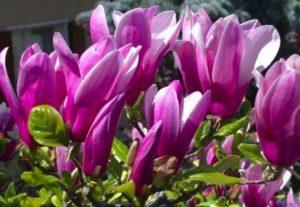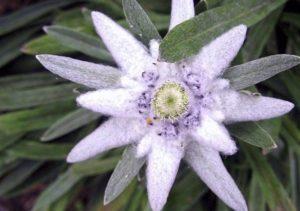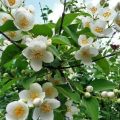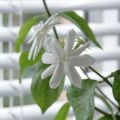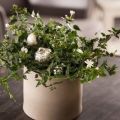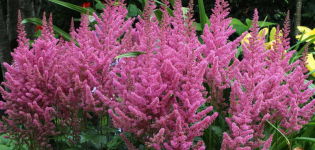Useful properties and contraindications of jasmine, its use
Much is already known about the beneficial properties of jasmine. The bush inflorescences are mainly used for making tea. But the scope of this shrub is not limited to this. Raw materials are used in folk medicine.
Brief characteristics of the plant
Jasmine belongs to the shrubs of the Olive family. East India is considered the birthplace of culture. Jasmine is often called the "king of flowers" because of its pleasant and intense aroma. The plant is a shrub more than 1 m high. Shoots are thin, green in color. White inflorescences are collected from 5-7 petals. Inflorescences are 2-2.5 cm in diameter. On the territory of Russia, jasmine is found in the Caucasus and Crimea.
Useful and medicinal properties of jasmine
Jasmine is famous for its unique properties. The inflorescences contain trace elements that have a positive effect on the body.
Useful properties of jasmine:
- Stimulates the work of the brain (although many note that, on the contrary, jasmine relaxes and has a hypnotic effect).
- Reduces pain before menstruation.
- Relieves headaches.
- Strengthens tooth enamel.
- Promotes the elimination of toxins from the body.
- Acts as a prophylactic agent against oncology.
- Eliminates stress and psycho-emotional overstimulation.
- The essential oil disinfects wounds.
- Helps in the treatment of bronchial asthma.
- Restores the body's work after hormonal failure.
- Relieves the symptoms of influenza and SARS.
- Normalizes blood insulin levels.
There is also a lot of information that jasmine tea is good for pregnant women, but it is advisable to consult a doctor before using.
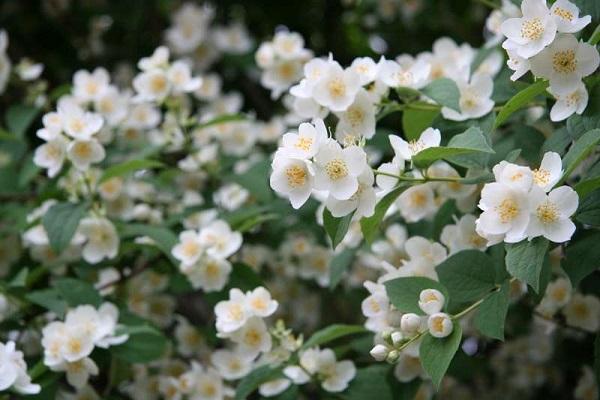
When and how to pick flowers correctly
The flowering of the shrub begins in May and lasts almost all summer, so there is enough time to collect the inflorescences. Mostly incompletely blossomed buds are collected. A feature of this plant is that the inflorescences are dissolved not in the morning, but in the evening, closer to night.
It is advisable to collect inflorescences from 4 to 5 in the morning, when the flowers have just begun to bloom. By collecting inflorescences in this time period, you can get raw materials saturated with useful vitamins and microelements. As the sun rises, the essential oils from the buds evaporate as they begin to heat up in the sun.
Flowers are harvested only in dry weather.After the rain, it makes no sense to collect the inflorescences, all the pollen is washed off with water. For collection it is best to choose half-open flowers.
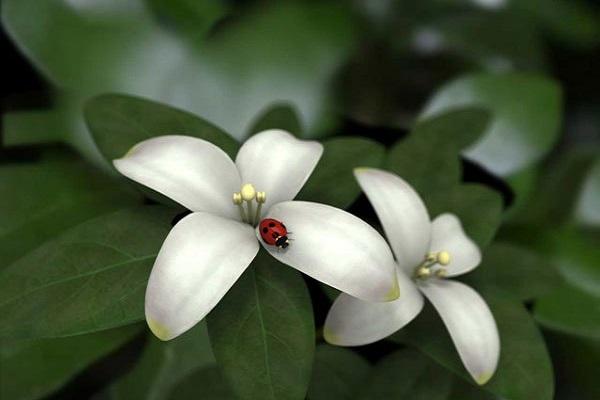
How to dry and store blanks
The most important thing in the procurement of raw materials is to properly dry them. As with all plants, it is not recommended to dry the collected inflorescences in the open sun.
Before drying, the inflorescences are not washed so as not to wash off the pollen. The collected flowers are dried in a cool, dark room with good ventilation. The main thing is that no sunlight falls on the raw materials.
Flowers are laid out on the newspaper in a thin layer. They are checked and mixed regularly. If the inflorescences are laid out in a thick layer, they will dry longer, and the bottom layer can rot and mold.

Determine whether the inflorescences are dried or not, you can touch. It is not recommended to use plastic bags for storage. It is best to pour the jasmine into a ceramic or glass container or cloth bag. Store raw materials in a place protected from sunlight.
Scope of the medicinal plant
The scope of application of jasmine is extensive. On its basis, teas are brewed, inflorescences are used in cooking. Also, a useful essential oil is obtained from jasmine, which is used in cosmetology.
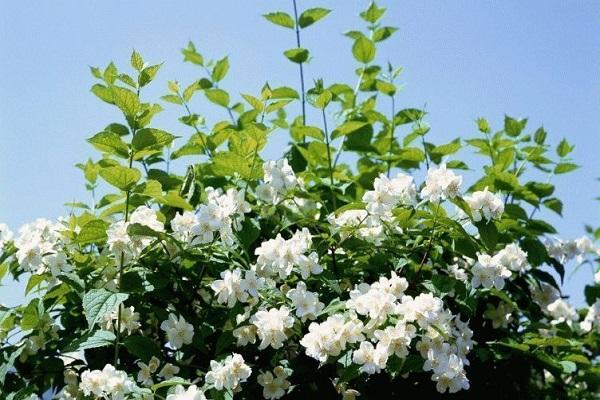
Cooking applications
Flowers have gained their popularity in cooking due to their unique aroma. They are mainly used for brewing tea. But flowers are also great for making desserts. The inflorescences can be used to make desserts and even ice cream. In addition, you can eat bush leaves. They are low in calories and are suitable for salads.
Traditional therapy
Jasmine has medicinal properties. But for the treatment of diseases, it is used with caution.
Healing baths
Jasmine flowers and leaves are suitable for relaxing and stress-relieving baths. Pour the jasmine inflorescences with water and bring to a boil, then pour the broth into the bath (you can together with the flowers). The scent of the inflorescences has a positive effect on the nervous system. Jasmine baths are good for bedtime.
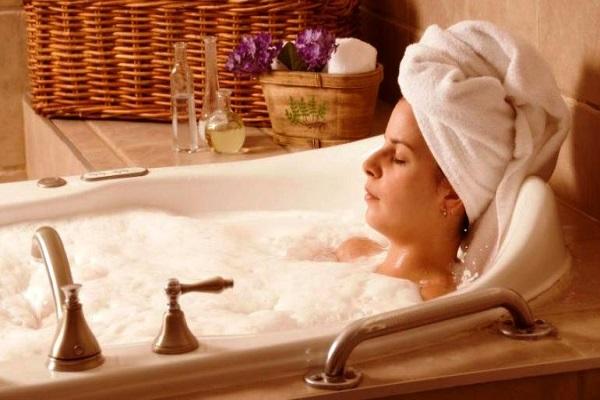
Jasmine oil for wound healing
Jasmine oil is used to relieve irritation on the skin and heal wounds. It not only helps to accelerate skin regeneration, but also has an antiseptic effect.
Aromatherapy
Another area of application for jasmine essential oil is aromatherapy. The scent of the essential oil can help eliminate emotional depression and anxiety. With nervous overexcitation, it will be enough to smell the oil, and after a while the condition will improve.
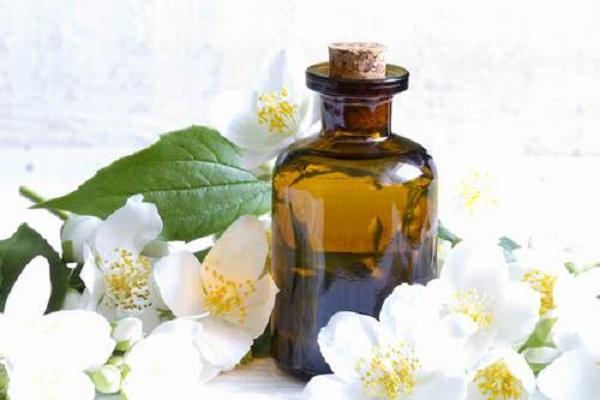
Use in cosmetology
In cosmetology, decoctions and infusions based on jasmine inflorescences are often used. The decoction can be used to rinse your hair and wipe your face. In addition to decoctions, essential oil is also used in cosmetology. It is added to face masks. The oil helps to rejuvenate and smooth wrinkles. To give hair a silky shine, the essential oil is rubbed into the ends for 1 hour and washed off with shampoo.
The benefits of jasmine tea
The main advantage of jasmine tea is that it will soothe unbearable headaches. Together with the inflorescences, you can brew other herbs and even berries.
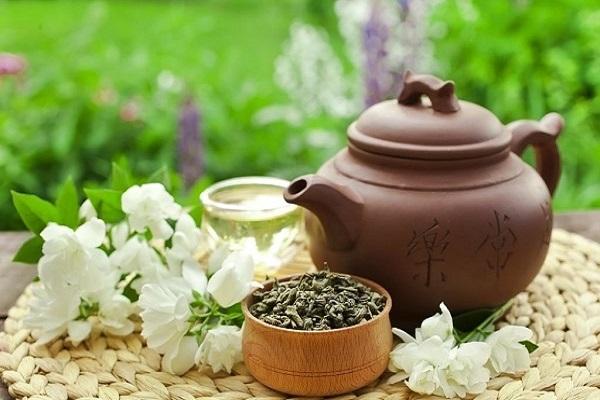
Cooking recipes
Classic tea recipe:
- 1 tsp jasmine inflorescences;
- 1 tsp green tea (large leaf);
- 500 ml of boiling water.
How to brew:
- Bring water to a boil.
- Pour tea and jasmine into a teapot.
- Cover with hot water and cover.
- Insist 10 minutes.
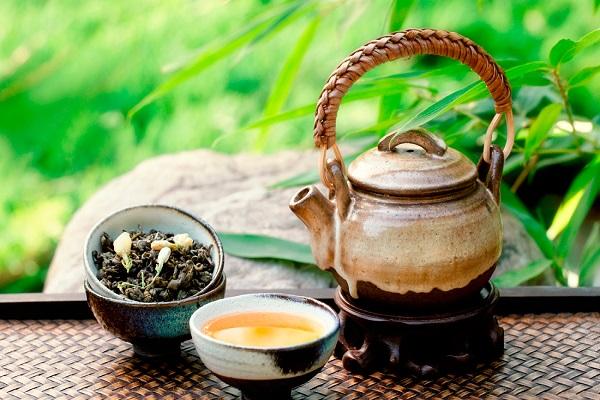
Oregano tea:
- 500 ml of water;
- 2 tsp jasmine inflorescences;
- 1 tsp oregano.
Brewing is similar to the first recipe.
Tea with lemon zest:
- 1 tbsp. l. inflorescences;
- 1 tsp grated zest of fresh lemon;
- 500 ml of water.
How to brew:
- Bring water to a boil.
- Pour the zest and leave for 10 minutes, then strain.
- Pour the infusion over the jasmine flowers.
- Insist for another 5 minutes.
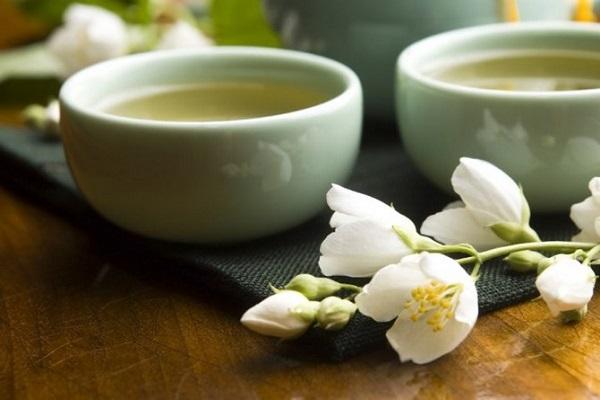
Dried Raspberry Recipe:
- 2 tbsp. l. raspberries;
- 3 tbsp. l. inflorescences;
- water.
How to brew:
- Bring water to a boil.
- Pour the berries.
- After 10 minutes, cover the flowers.
- Cover and wait 7 minutes.
The raspberry drink turns out to be sour, so you can add honey. Tea is also brewed with orange peel, dried berries and various herbs.
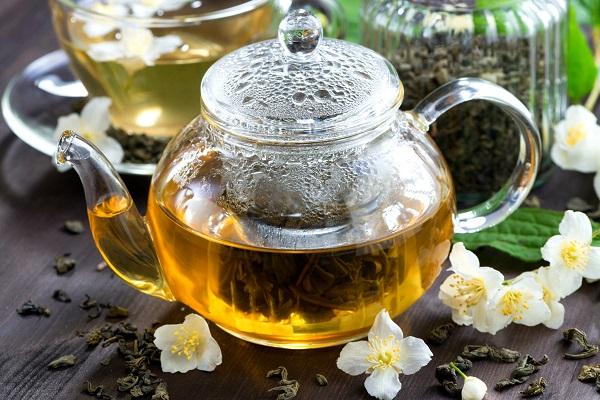
When is it recommended to drink
Jasmine tea can be drunk like a regular drink. Jasmine tea has a positive effect on nervous overstrain, severe stress, fatigue and anxiety. The drink helps to relieve tension and improve sleep. You can also drink before your period to relieve pain.
Daily rate
Tea can be drunk in unlimited quantities, there is no specific daily intake. But still it is not recommended to abuse it and drink it beyond measure. For example, people with low blood pressure cannot drink a lot of tea.

Are there any contraindications
Despite all the benefits that regular jasmine tea can bring, it can be harmful.
Jasmine harm to the body:
- It is not recommended to use jasmine in cooking and cosmetology for people with an allergic reaction to this plant.
- Due to the caffeine content of tea, blood pressure can rise with frequent use.
- Contraindicated in pregnant women and people with mental illness.
It is advisable to consult a doctor about drinking jasmine tea for people with serious medical conditions. No one knows how this will affect health. Better to protect yourself right away.
